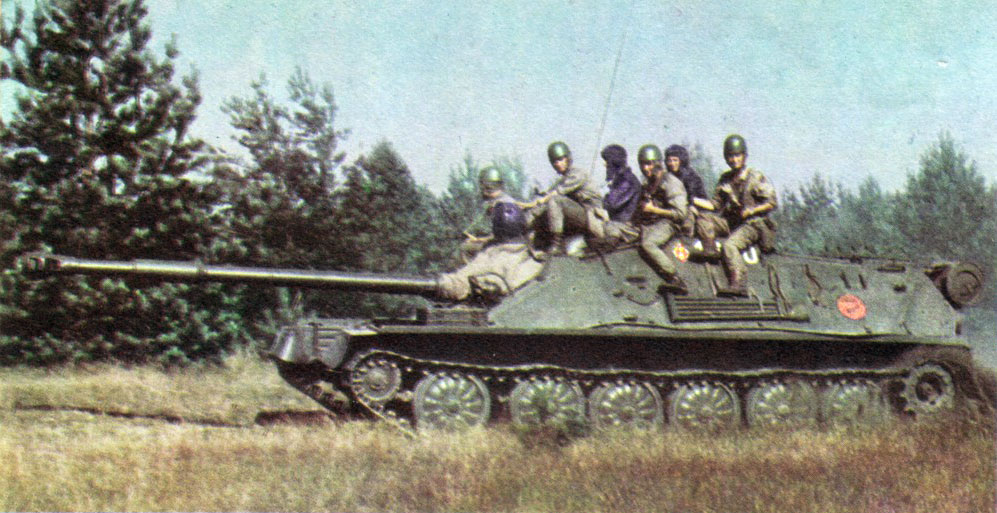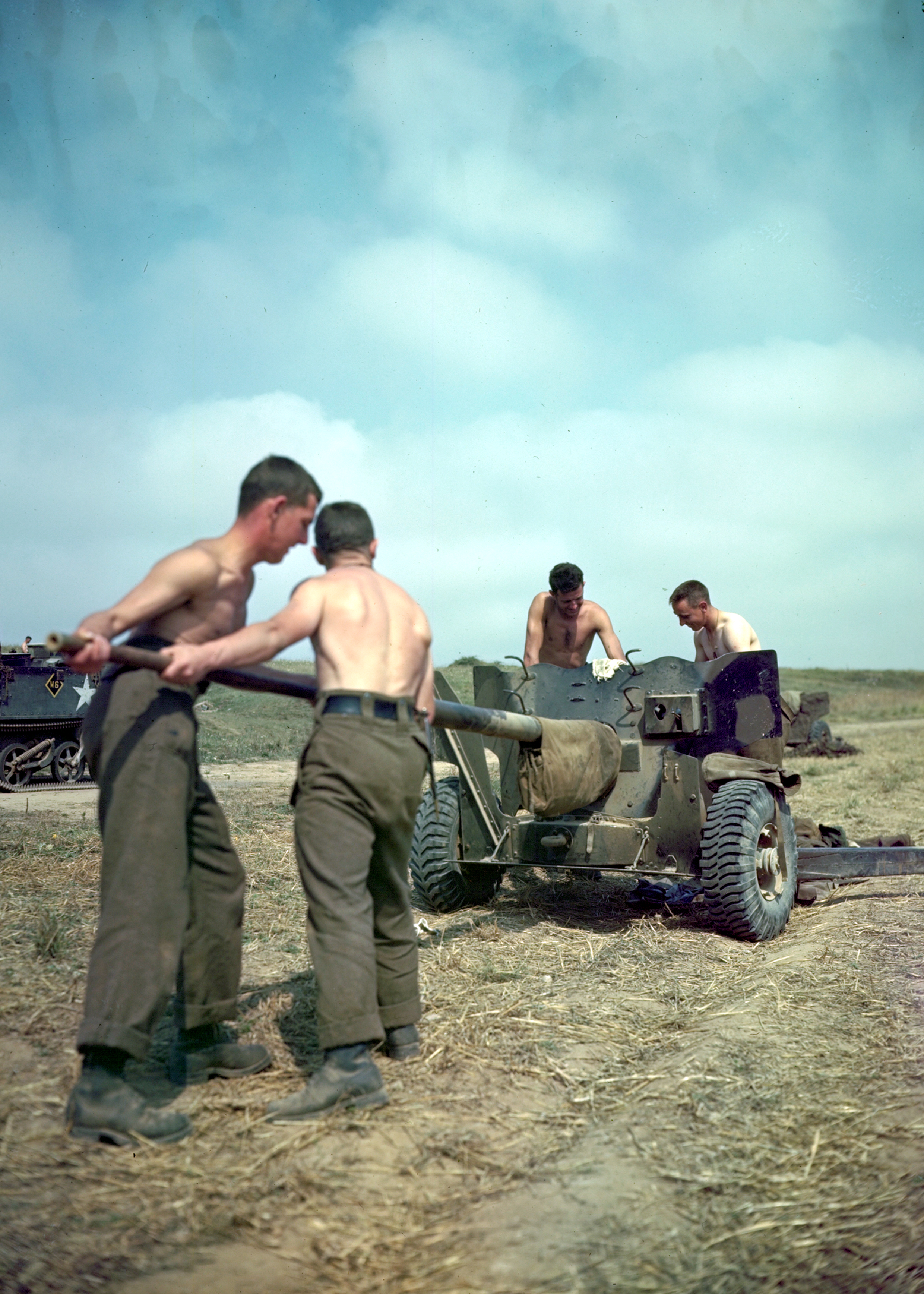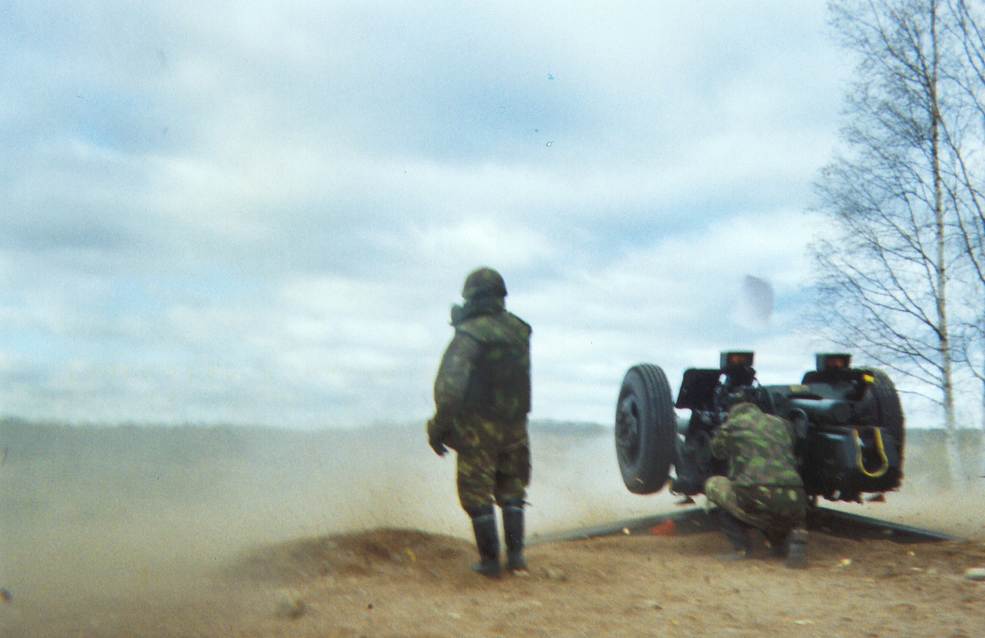|
Airborne Gun
Airborne guns are airborne artillery pieces, designed for use by paratroopers. They are generally specific or specialised types of infantry support guns, being in the traditional sense capable of being broken down into smaller loads for transport by aircraft and soldiers, thus also suitable as mountain guns. The historical concept of the "airborne guns" is to some degree outdated, their role being filled by mortars, wire-guided missiles, and/or light anti-tank weapons. As it has been many decades since two industrialized great powers engaged directly in warfare, the concept of the "airborne gun" allowing paratroopers to maintain an airhead against an armored force is in that sense non-functional, but currently, all three of the U.S. Army's howitzers (for example), are air-mobile. Airborne guns by country China *Chinese airborne forces have mounted 105mm recoilless rifles on jeeps but otherwise conform to the Warsaw Pact doctrine of light armored vehicles. Germany (histori ... [...More Info...] [...Related Items...] OR: [Wikipedia] [Google] [Baidu] |
Airborne Forces
Airborne forces, airborne troops, or airborne infantry are ground combat units carried by aircraft and airdropped into battle zones, typically by parachute drop or air assault. Parachute-qualified infantry and support personnel serving in airborne units are also known as paratroopers. The main advantage of airborne forces is their ability to be deployed into combat zones without land passage, as long as the airspace is accessible. Formations of airborne forces are limited only by the number and size of their transport aircraft; a sizeable force can appear "out of the sky" behind enemy lines in merely hours if not minutes, an action known as ''vertical envelopment''. Airborne forces typically lack enough supplies for prolonged combat, so they are utilized for establishing an airhead to bring in larger forces before carrying out other combat objectives. Some infantry fighting vehicles have also been modified for paradropping with infantry to provide heavier firepower. Due t ... [...More Info...] [...Related Items...] OR: [Wikipedia] [Google] [Baidu] |
ASU-85
The ASU-85 (russian: Авиадесантная самоходная установка, АСУ-85, Aviadesantnaya Samokhodnaya Ustanovka, ASU-85 – airborne self-propelled mount) is a Soviet-designed airborne self-propelled gun of the Cold War era. From 1959, it began to replace the open-topped ASU-57 in service. It was, in turn, replaced by the BMD-1 beginning in 1969. Development history Development of a new assault gun for the armed forces started at the OKB-40 design bureau of the Mytishchi Machine Building Plant (MMZ), under the supervision of chief designer Nikolaj Aleksandrovich Astrov. The first Ob'yekt 573 prototype was ready for factory tests in the second half of 1953. This first vehicle was followed by a small batch of three improved vehicles that were evaluated by the armed forces in 1956–1957. The improved vehicles were powered by a new, horizontal six cylinder diesel engine, the YaMZ-206V, instead of the original V-6 of the PT-76. In 1958, the order to start se ... [...More Info...] [...Related Items...] OR: [Wikipedia] [Google] [Baidu] |
M198 Howitzer
The M198 is a medium-sized, towed 155 mm artillery piece, developed for service with the United States Army and Marine Corps. It was commissioned to be a replacement for the World War II-era M114 155 mm howitzer. It was designed and prototyped at the Rock Island Arsenal in 1969 with firing tests beginning in 1970 and went into full production there in 1978. It entered service in 1979 and since then 1,600 units have been produced. The M198 was replaced in US and Australian service by the M777 howitzer. Description The M198 155 mm howitzer weighs less than , allowing it to be dropped by parachute or transported by a CH-53E Super Stallion or CH-47 Chinook. The M198 is a towed howitzer that is transported tail first. The gun tube can be rotated over the howitzer's trail legs to reduce its length, though this requires removal of the muzzle brake, or left in the firing position for faster deployment. When firing, the weapon is lowered onto its baseplate rather than being anchored ... [...More Info...] [...Related Items...] OR: [Wikipedia] [Google] [Baidu] |
Main Battle Tank
A main battle tank (MBT), also known as a battle tank or universal tank, is a tank that fills the role of armor-protected direct fire and maneuver in many modern armies. Cold War-era development of more powerful engines, better suspension systems and lighter-weight composite armor allowed the design of a tank that had the firepower of a super-heavy tank, the armor protection of a heavy tank, and the mobility of a light tank, in a package with the weight of a medium tank. Through the 1960s and 1970s, the MBT replaced almost all other types of tanks, leaving only some specialist roles to be filled by lighter designs or other types of armored fighting vehicles. Main battle tanks are a key component of modern armies.#House1984, House (1984), ''Toward Combined Arms Warfare: A Survey of 20th-Century Tactics, Doctrine, and Organization'' Modern MBTs seldom operate alone, as they are organized into armoured units that include the support of infantry, who may accompany the tanks in inf ... [...More Info...] [...Related Items...] OR: [Wikipedia] [Google] [Baidu] |
L118
The L118 light gun is a 105 mm towed howitzer. It was originally designed and produced in England for the British Army in the 1970s. It has since been widely exported. The L119 and the United States Army's M119 are variants that use a different type of ammunition. History Development From 1961 to 1975, the British Army had the widely used 105 mm OTO Melara Mod 56, which it called the "L5 pack howitzer", with L10 ordnance as its light artillery weapon, replacing the 75 mm howitzer, 4.2 inch mortar and 25-pounder gun in eight regular artillery regiments. It fires the US M1 type ammunition (called "105 mm How" in the UK). The Mod 56 was originally designed in Italy for its mountain artillery units. It was light enough to be lifted by Westland Wessex helicopters or towed by Land Rovers. It could also be dismantled, with no piece heavier than 128 kg, to be transported by mules or horses. It lacked range (making it potentially vulnerable to counter-battery fire), was n ... [...More Info...] [...Related Items...] OR: [Wikipedia] [Google] [Baidu] |
M119
The M119 howitzer is the American version of the British L119 light gun, a lightweight British 105 mm howitzer also used by the United States Army. The M119 is typically towed by the M1097 or M1152 High Mobility Multi-Purpose Wheeled Vehicle (HMMWV), and can be easily airlifted by helicopter, or airdropped by parachute. Development The howitzer was designed and produced by the British Royal Ordnance Factories as the L118 light gun. In the L118 configuration, the 105 mm ammunition is cased separate loading ammunition (not semi-fixed projectile and propelling charge as sometimes stated). The L118 entered service with the British Army in 1976 and is used by parachute and commando field artillery regiments. It saw combat during the Falklands War, where the 30 guns in action fired up to 400 rounds per gun per day, mostly at "charge super"—i.e., the most powerful propellant charge available. The L119 is the L118 reconfigured to fire NATO-standard 105 mm semi-fixed ... [...More Info...] [...Related Items...] OR: [Wikipedia] [Google] [Baidu] |
Ordnance QF 6 Pounder
The Ordnance Quick-Firing 6-pounder 7 cwt,British forces traditionally denoted smaller ordnance by the weight of its standard projectile, in this case approximately . The approximate weight of the gun barrel and breech, "7 cwt" (cwt = hundredweight), was included in the designation to distinguish this gun from others also firing a 6 lb projectile. or just 6-pounder, was a British 57 mm gun, serving during the Second World War as a primary anti-tank gun of both the British and United States Army (as the 57 mm Gun M1). It was also used as the main armament for a number of armoured fighting vehicles. Although designed before the start of the war, it did not reach service until the North African Campaign in April 1942. There, it replaced the 2-pounder as an anti-tank gun, allowing the 25-pounder gun-howitzer to revert to its intended artillery role. Development and production Development Limitations of the existing 2-pounders were apparent even as the gun entered ... [...More Info...] [...Related Items...] OR: [Wikipedia] [Google] [Baidu] |
L118 Light Gun
The L118 light gun is a 105 mm towed howitzer. It was originally designed and produced in England for the British Army in the 1970s. It has since been widely exported. The L119 and the United States Army's M119 are variants that use a different type of ammunition. History Development From 1961 to 1975, the British Army had the widely used 105 mm OTO Melara Mod 56, which it called the "L5 pack howitzer", with L10 ordnance as its light artillery weapon, replacing the 75 mm howitzer, 4.2 inch mortar and 25-pounder gun in eight regular artillery regiments. It fires the US M1 type ammunition (called "105 mm How" in the UK). The Mod 56 was originally designed in Italy for its mountain artillery units. It was light enough to be lifted by Westland Wessex helicopters or towed by Land Rovers. It could also be dismantled, with no piece heavier than 128 kg, to be transported by mules or horses. It lacked range (making it potentially vulnerable to counter-battery fire), was n ... [...More Info...] [...Related Items...] OR: [Wikipedia] [Google] [Baidu] |
105 Mm Calibre
105 mm (4.1 in) is a common NATO-standard artillery and tank gun caliber. The rifled tank round is defined by STANAG 4458. The artillery round is defined by AOP-29 part 3 with reference to STANAG 4425. Artillery Since the early 21st century, most NATO armies have settled on 155 mm weapons as having a good compromise between range and power whilst having a single calibre, which simplifies logistics; however some military forces have retained 105 mm towed howitzers for their lighter weight and greater portability, including their rapid airlift and airdrop capabilities. The reduced power and decreased range of 105 mm ammunition has led to its obsolescence in full-sized self-propelled guns such as the American M108 howitzer and British FV433 Abbot SPG. Russian guns and those of former Soviet bloc countries tend to use slightly larger, 122 mm (4.8 in) and 130 mm (5.1 in) weapons in similar roles. 105 mm artillery guns *FV433 Abbot SPG () *G7 howitzer () *GIAT LG1 () * Indian field ... [...More Info...] [...Related Items...] OR: [Wikipedia] [Google] [Baidu] |
Mechanical And Chemical Industry Corporation (Turkey)
The Mechanical and Chemical Industry Corporation ( tr, Makina ve Kimya Endüstrisi or MKE for short), established in 1950, is a reorganization of government-controlled group of factories in Turkey that supplied the Turkish Armed Forces with military products. History Its roots lie in the "Tophane-i Amire" ("Royal Arsenal") built in the latter part of the 15th Century to supply the Ottoman Empire's artillery corps with cannon, powder, and shot. This was reorganized in 1832 as the "Tophane Müşavirliği" ("Arsenal of Ordnance and Artillery Marshalship") and was later formed in a department of "Harbiye Nezareti" (Ministry of War) in 1908. After World War I and the following " Young Turks" revolt, it was reorganized as the "General Directorate of Military Factories" in 1923. Today, the MKE is made up of 12 facilities that employ 7,430 personnel. Legal status The company's legal status has changed from state-owned enterprise to a corporation, with the Law Nr. 7330 dated July 3rd, 20 ... [...More Info...] [...Related Items...] OR: [Wikipedia] [Google] [Baidu] |
ZU-23
The ZU-23-2, also known as ZU-23, is a Soviet towed 23×152mm anti-aircraft twin-barreled autocannon. ZU stands for ''Zenitnaya Ustanovka'' (Russian: Зенитная Установка) – anti-aircraft mount. The GRAU index is 2A13. Development history The ZU-23-2 was developed in the late 1950s. It was designed to engage low-flying targets at a range of 2.5 km as well as armoured vehicles at a range of two kilometres and for direct defence of troops and strategic locations against air assault usually conducted by helicopters and low-flying airplanes. In 1955, KBP presented the single-barrel ZU-1 and the twin-barrel ZU-14. While the former was eventually dropped, the ZU-14 was selected and, after some modifications, entered series production. In the Soviet Union, some 140,000 units were produced. The ZU-23 has also been produced under licence by Bulgaria, Poland, Egypt and the People's Republic of China. Development of this weapon into a self-propelled anti-aircraft gu ... [...More Info...] [...Related Items...] OR: [Wikipedia] [Google] [Baidu] |
122 Mm Howitzer 2A18 (D-30)
The 122-mm howitzer D-30 ( GRAU index 2A18) is a Soviet howitzer that first entered service in 1960. It is a robust piece that focuses on the essential features of a towed field gun suitable for all conditions. The D-30 has a maximum range of 15.4 kilometers, or over 21 km using rocket-assisted projectile ammunition. With its striking three-leg mounting, the D-30 can be rapidly traversed through 360 degrees. Although no longer manufactured in the nations of the former Soviet Union, the D-30 is still manufactured internationally and is in service in more than 60 countries' armed forces. The barrel assembly of the 2A18 gun is used by the 2S1 self-propelled howitzer. There are also Egyptian, Chinese, Serbian and Syrian self-propelled variants and conversions. The Syrian conversion utilizes the hull of a T-34 tank. History The 122 mm (originally 48 lines) calibre was adopted by Russia in the early 20th century, becoming very important to Soviet artil ... [...More Info...] [...Related Items...] OR: [Wikipedia] [Google] [Baidu] |








